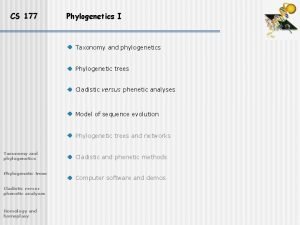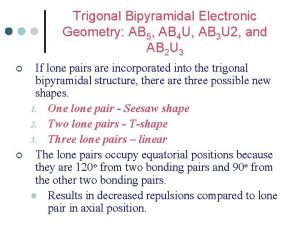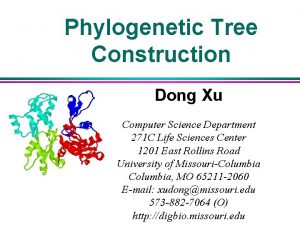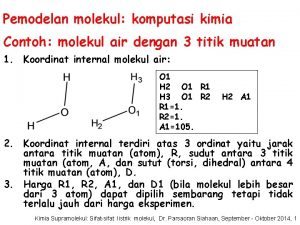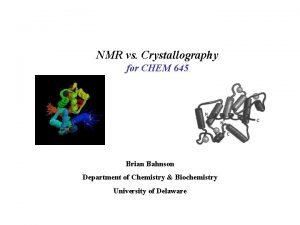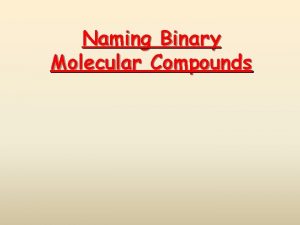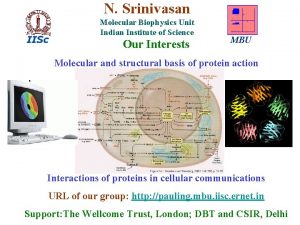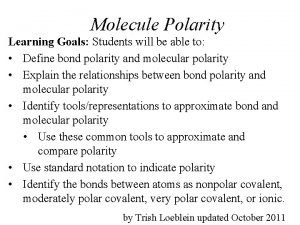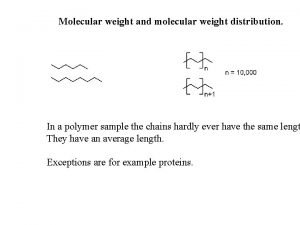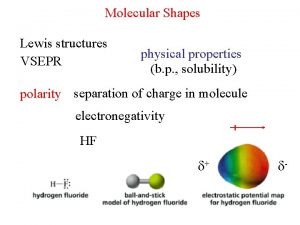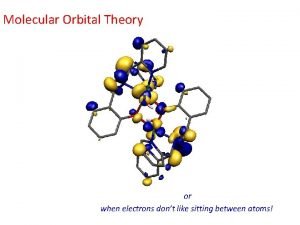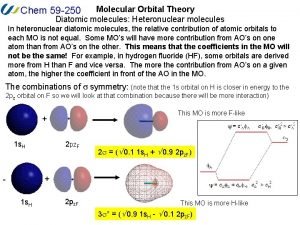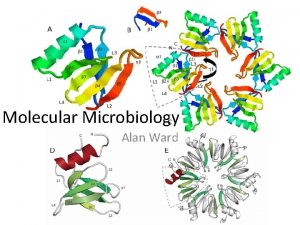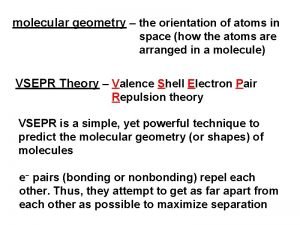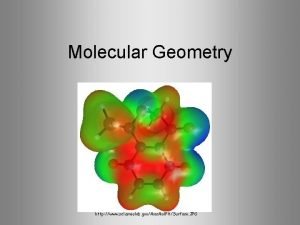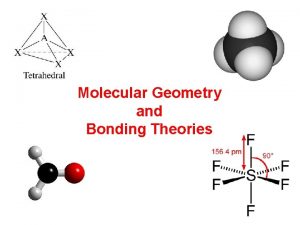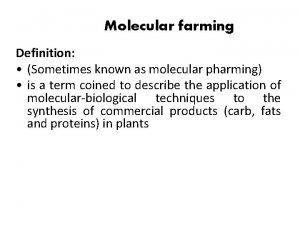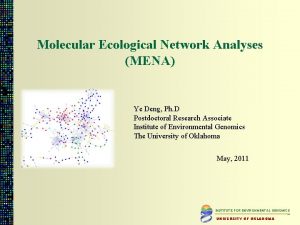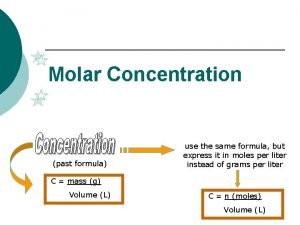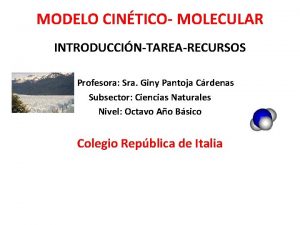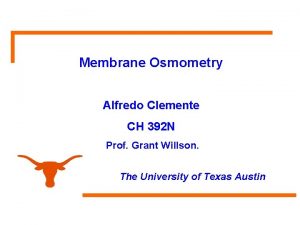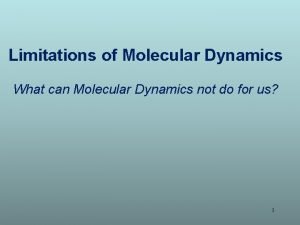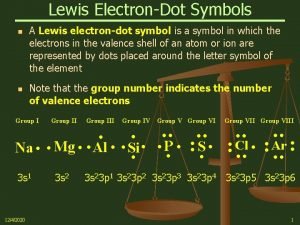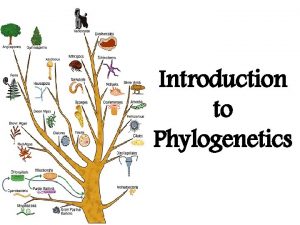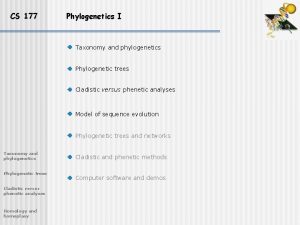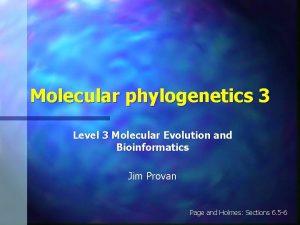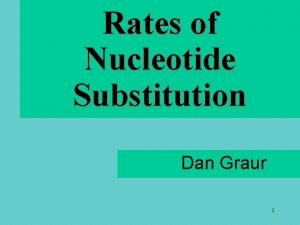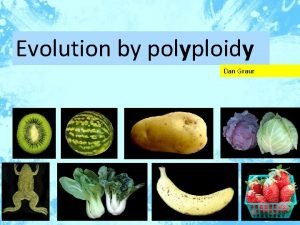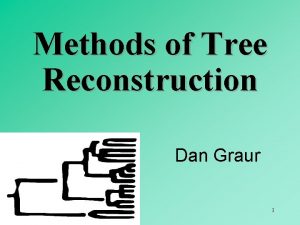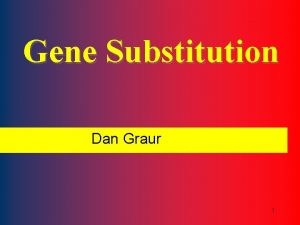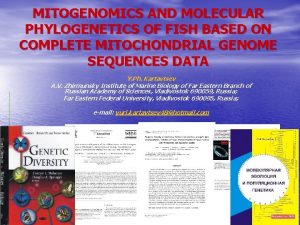Molecular Phylogenetics Dan Graur 1 2 3 4

































































- Slides: 65

Molecular Phylogenetics Dan Graur 1

2

3

4

5

Molecular phylogenetic approaches: 1. distance-matrix (based on distance measures) 2. character-state (based on character states) 3. maximum likelihood (based on both character states and distances) 6

DISTANCE-MATRIX METHODS In the distance matrix methods, evolutionary distances (usually the number of nucleotide substitutions or amino-acid replacements between two taxonomic units) are computed for all pairs of taxa, and a phylogenetic tree is constructed by using an algorithm based on some functional relationships among the distance values. 7

Multiple Alignment 8

Distance Matrix* *Units: Numbers of nucleotide substitutions per 1, 000 nucleotide sites 9

Distance Methods: UPGMA Neighbor-relations Neighbor joining 10

UPGMA Unweighted pair-group method with arithmetic means 11

UPGMA employs a sequential clustering algorithm, in which local topological relationships are identified in order of decreased similarity, and the tree is built in a stepwise manner. 12

simple OTUs 13

composite OTU 14

15

16

UPGMA only works if the distances are strictly ultrametric. 17

Neighborliness methods The neighbors-relation method (Sattath & Tversky) The neighbor-joining method (Saitou & Nei) 18

In an unrooted bifurcating tree, two OTUs are said to be neighbors if they are connected through a single internal node. 19

If we combine OTUs A and B into one composite OTU, then the composite OTU (AB) and the simple OTU C become neighbors. 20

A C B + < D + = + Four-Point Condition 21

22

23

In distance-matrix methods, it is assumed: Similarity Kinship 24

From Similarity to Relationship • Similarity = Relationship, only if genetic distances increase with divergence times (monotonic distances). 25

From Similarity to Relationship Similarities among OTUs can be due to: • Ancestry: – Shared ancestral characters (plesiomorphies) – Shared derived characters (synapomorphy) • Homoplasy: – Convergent events – Parallel events – Reversals 26

27

Parsimony Methods: Willi Hennig 1913 -1976 28

“Pluralitas non est ponenda sine neccesitate. ” (Plurality should not be posited without necessity. ) Occam’s razor William of Occam or Ockham (ca. 1285 -1349) English philosopher & Franciscan monk Excommunicated by Pope John XXII in 1328. Officially rehabilitated by Pope Innocent VI in 1359. 29

MAXIMUM PARSIMONY METHODS Maximum parsimony involves the identification of a topology that requires the smallest number of evolutionary changes to explain the observed differences among the OTUs under study. In maximum parsimony methods, we use discrete character states, and the shortest pathway leading to these character states is chosen as the best or maximum parsimony tree. Often two or more trees with the same minimum number of changes are found, so that no unique tree can be inferred. Such trees are said to be equally parsimonious. 30

invariant 31

variant 32

uninformative 33

informative 34

35

36

37

38

Inferring the maximum parsimony tree: 1. Identify all the informative sites. 2. For each possible tree, calculate the minimum number of substitutions at each informative site. 3. Sum up the number of changes over all the informative sites for each possible tree. 4. Choose the tree associated with the smallest number of changes as the maximum parsimony tree. 39

In the case of four OTUs, an informative site can only favor one of the three possible alternative trees. Thus, the tree supported by the largest number of informative sites is the most parsimonious tree. 40

With more than 4 OTUs, an informative site may favor more than one tree, and the maximum parsimony tree may not necessarily be the one supported by the largest number of informative sites. 41

The informative sites that support the internal branches in the inferred tree are deemed to be synapomorphies. All other informative sites are deemed to be homoplasies. 42

43

Parsimony is based solely on synapomorphies 44

45

Variants of Parsimony Wagner-Fitch: Unordered. Character state changes are symmetric and can occur as often as neccesary. Camin-Sokal: Complete irreversibility. Dollo: Partial irreversibility. Once a derived character is lost, it cannot be regained. Weighted: Some changes are more likely than others. Transversion: A type of weighted parsimony, in which transitions are ignored. 46

Fitch’s (1971) method for inferring nucleotides at internal nodes 47

Fitch’s (1971) method for inferring nucleotides at internal nodes The set at an internal node is the intersection ( ) of the two sets at its immediate descendant nodes if the intersection is not empty. The set at an internal node is the union ( ) of the two sets at its immediate descendant nodes if the intersection is empty. When a union is required to form a nodal set, a nucleotide substitution at this position must be assumed to have occurred. number of unions = minimum number of substitutions 48

Fitch’s (1971) method for inferring nucleotides at internal nodes 4 substitutions 3 substitutions 49

50

total number of substitutions in a tree = tree length 51

Searching for the maximum-parsimony tree 52

Exhaustive = Examine all trees, get the best tree (guaranteed). Branch-and-Bound = Examine some trees, get the best tree (guaranteed). Heuristic = Examine some trees, get a tree that may or may not be the best tree. 53

Exhaustive Ascendant tree 2 Descendant trees of tree 2 54

Branch -and. Bound 55

Branch -and. Bound Obtain a tree by a fast method. (e. g. , the neighbor-joining method) Compute minimum number of substitutions (L). Turn L into an upper bound value. Rationale: (1) the maximum parsimony tree must be either equal in length to L or shorter. (2) A descendant tree is either equal in length or longer than the ascendant tree. 56

Branch -and. Bound 57

Heuristic 58

59

60

Likelihood • Example: • Data: • Hypothesis: Coin tossing Outcome of 10 tosses: 6 heads + 4 tails Binomial distribution 61

LIKELIHOOD IN MOLECULAR PHYLOGENETICS • The data are the aligned sequences • The model is the probability of change from one character state to another (e. g. , Jukes & Cantor 1 -P model). • The parameters to be estimated are: Topology & Branch Lengths 62

63

Background: Maximum Likelihood How to calculate ML score for a tree : 1. . . j. . . N. . Seq x: C. . . GGACGTTTA. . . C Seq y: C. . . AGATCTCTA. . . C. . 64

Background: Maximum Likelihood Calculate likelihood for a single site j given tree : R: root A B where C 65
 Animal kingdom phylogeny
Animal kingdom phylogeny Scaled and unscaled phylogenetic trees
Scaled and unscaled phylogenetic trees Mega phylogenetics
Mega phylogenetics Covalent bond melting point
Covalent bond melting point Ionic covalent metallic
Ionic covalent metallic Giant molecular structure vs simple molecular structure
Giant molecular structure vs simple molecular structure Science
Science Vsepr theory predicts
Vsepr theory predicts Vsepr theory shapes
Vsepr theory shapes Pf3 number of vsepr electron groups
Pf3 number of vsepr electron groups Crash course molecular biology
Crash course molecular biology Molecular level vs cellular level
Molecular level vs cellular level Bathochromic shift and hypsochromic shift
Bathochromic shift and hypsochromic shift Sf5cl lewis structure
Sf5cl lewis structure Ideal gas law examples
Ideal gas law examples Properties of network covalent solids
Properties of network covalent solids Kinetic molecular theory of solid
Kinetic molecular theory of solid The chemical formula of a compound indicates
The chemical formula of a compound indicates Clasificacion molecular cancer de endometrio
Clasificacion molecular cancer de endometrio Molecular geometry chart
Molecular geometry chart 5 examples of palindromic dna sequences
5 examples of palindromic dna sequences Molecular rebar design
Molecular rebar design Covalent molecular substances
Covalent molecular substances Empirical formula of haemoglobin
Empirical formula of haemoglobin Number molecular weight
Number molecular weight Dicots
Dicots How to find molecular formula
How to find molecular formula How to find molecular formula
How to find molecular formula Percentage of composition
Percentage of composition How to find molecular formula
How to find molecular formula Molecular modelling laboratory
Molecular modelling laboratory Molecular replacement method
Molecular replacement method Alkene structural formula
Alkene structural formula Naming and writing formulas for molecular compounds
Naming and writing formulas for molecular compounds Binary molecular formula
Binary molecular formula N srinivasan mbu
N srinivasan mbu Relationship between bond dipoles and molecular dipoles
Relationship between bond dipoles and molecular dipoles Number-average molecular weight
Number-average molecular weight Ch2o lewis structure molecular geometry
Ch2o lewis structure molecular geometry Molecular shapes quiz
Molecular shapes quiz Molecular shape and polarity
Molecular shape and polarity Molecular replacement method
Molecular replacement method Patterson
Patterson Types of molecular orbitals
Types of molecular orbitals Heteronuclear diatomic molecules molecular orbital diagram
Heteronuclear diatomic molecules molecular orbital diagram B2 molecular orbital diagram
B2 molecular orbital diagram Molecular response
Molecular response H - c
H - c Molecular microbiology definition
Molecular microbiology definition 4 electron domains 2 lone pairs
4 electron domains 2 lone pairs Is bent polar
Is bent polar Electron geometry and molecular geometry
Electron geometry and molecular geometry Scl molecular geometry
Scl molecular geometry Molecular geometry and bonding theories
Molecular geometry and bonding theories What is a bond order in chemistry
What is a bond order in chemistry Molecular gastronomy restaurants
Molecular gastronomy restaurants Define molecular formula
Define molecular formula Molecular farming
Molecular farming Concln
Concln What is molecular mass
What is molecular mass How to go from grams to moles
How to go from grams to moles Modelo cinetico molecular
Modelo cinetico molecular Membrane osmometry
Membrane osmometry Propiedades del agua
Propiedades del agua Molecular dynamics limitations
Molecular dynamics limitations Cyanate ion formula
Cyanate ion formula

